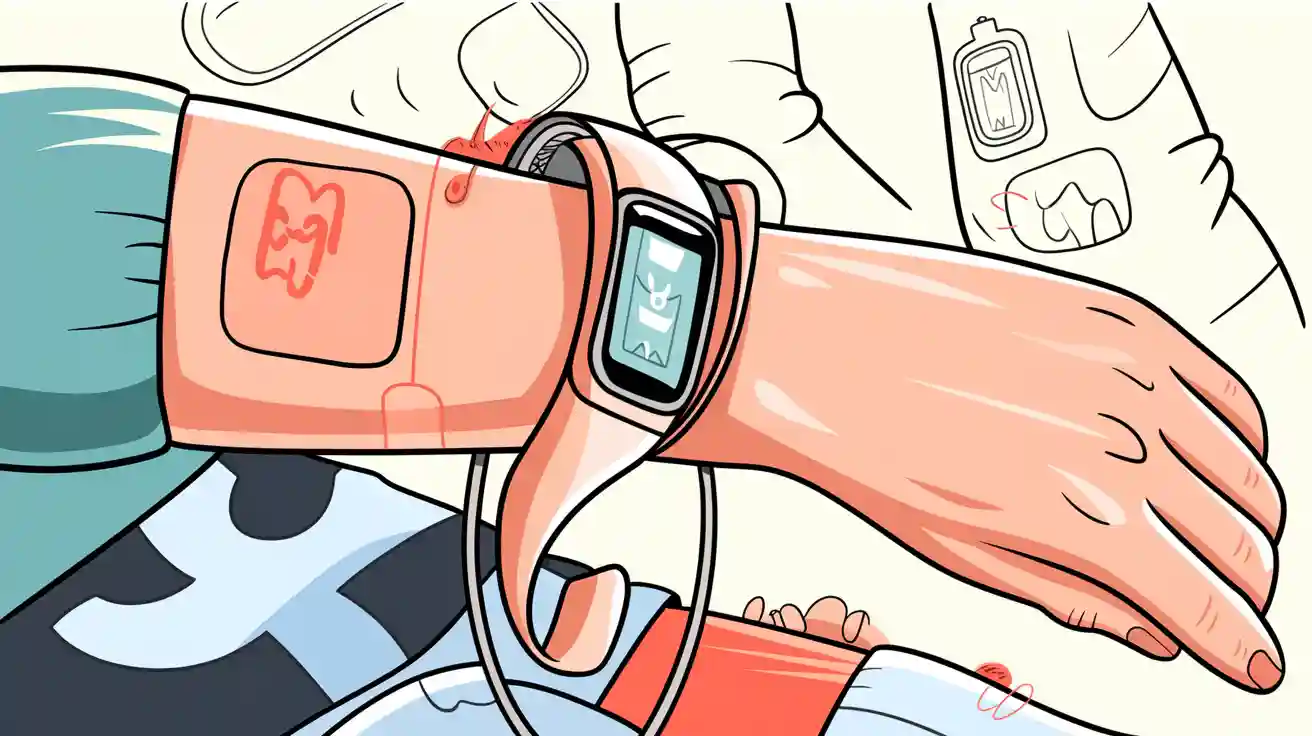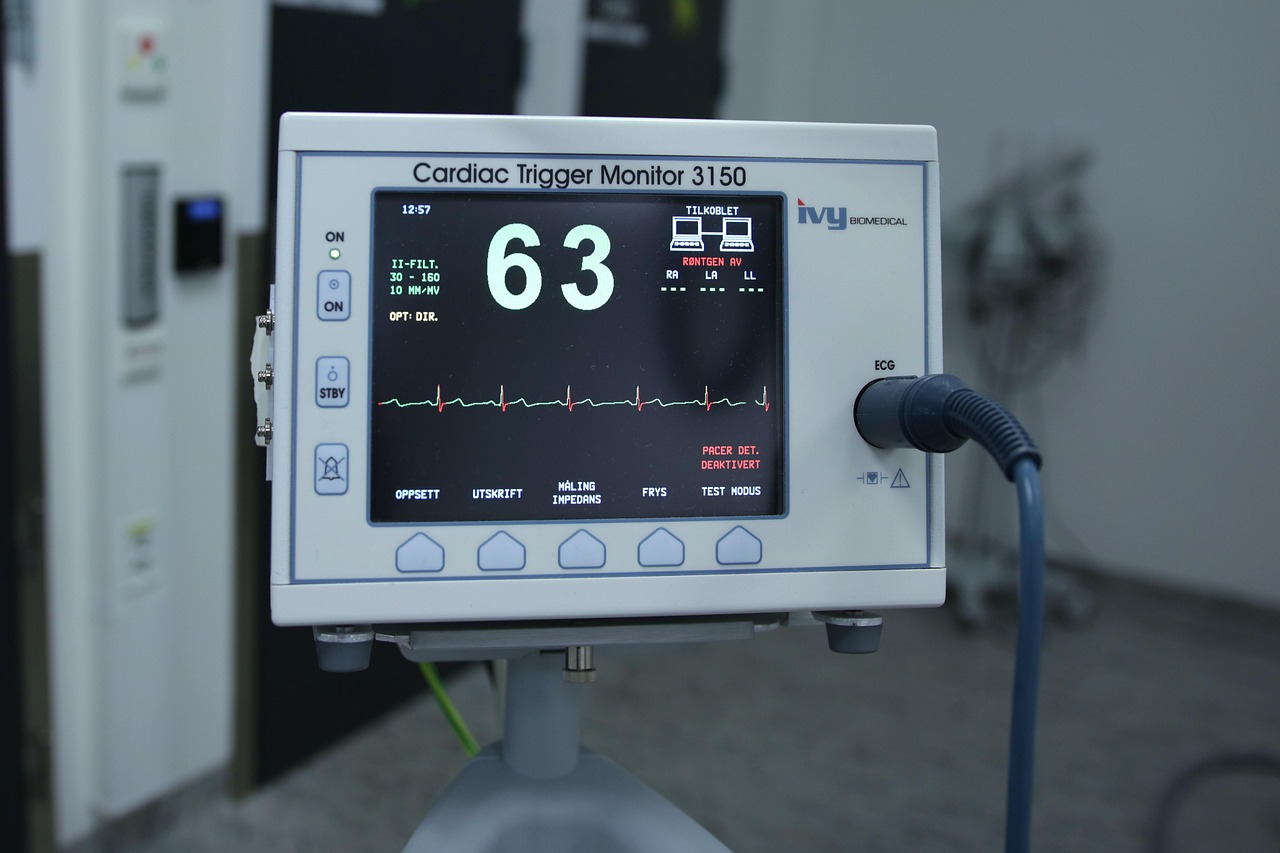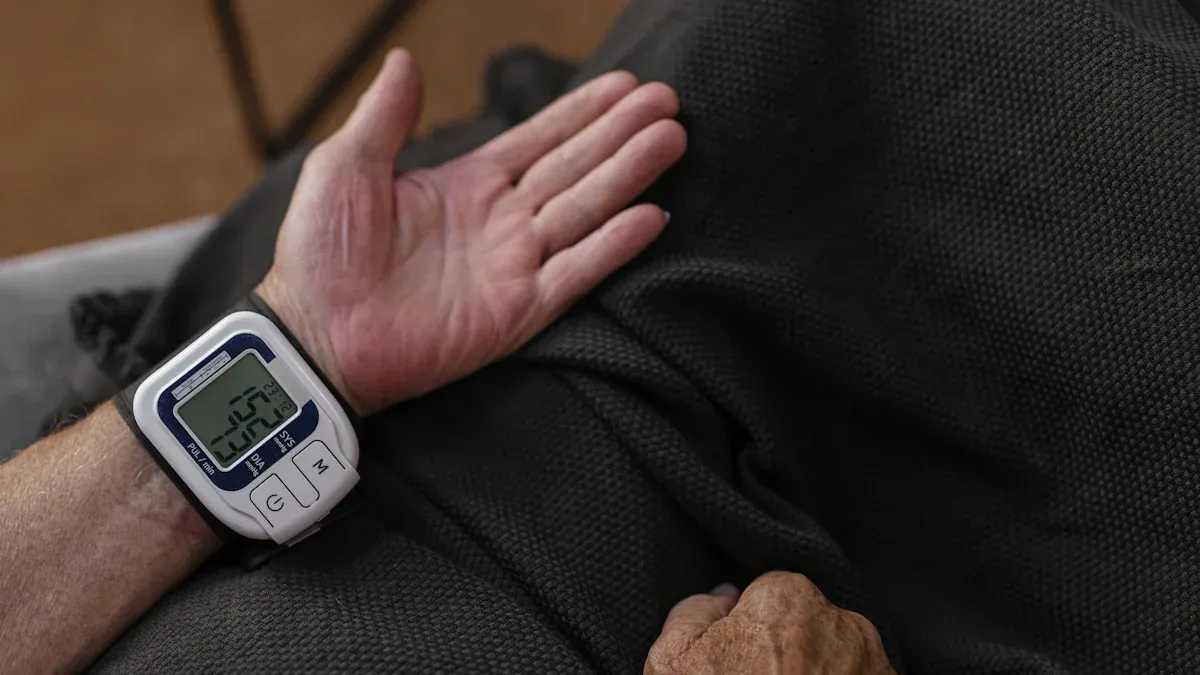
Flexible batteries help new ideas in wearable medical devices. You get batteries that can stretch, breathe, and are thin. These battery designs feel comfortable and help people use them more. Lithium battery packs and custom options make these devices easier to wear every day. More people are using flexible batteries now. In 2024, over 26 million wearable medical devices use this technology.
Battery Type | Adoption Rate in 2024 | Market Presence (Units) |
|---|---|---|
Flexible Batteries | Going up fast | Over 26 million devices |
Traditional Batteries | Not as easy to use | N/A |
Key Takeaways
Flexible batteries make wearable medical devices more comfortable. They can bend and stretch. This makes them easy to wear for a long time.
Flexible batteries help patients use devices more often. Comfortable devices make people want to wear them every day. This helps doctors check health better.
Special materials like carbon nanotubes and graphene help flexible batteries work well. These new materials make devices last longer and work better.
Flexible batteries have safety features to lower risks. They are made to stop fires and keep people safe in hospitals.
More people are using flexible batteries now. By 2024, over 26 million wearable medical devices will use them.
Part1: Flexible Batteries in Wearable Medical Devices

1.1 What Makes Batteries Flexible
Batteries need to change shape with your body. Flexible batteries can bend, fold, and stretch. They fit into many wearable and implantable devices easily.
Flexible batteries use special materials and designs:
Carbon cloth and conducting polymers.
Buckling, spiral, and kirigami shapes help them flex more.
Better flexible electrodes, current collectors, and electrolytes make batteries work well and stay flexible. These new ideas help meet the need for flexible medical devices in healthcare, health checks, and telemedicine.
1.2 Importance for Wearable Comfort
You want wearables that feel good and are easy to wear for a long time. Flexible and stretchable batteries help with this. They let devices fit your body better and feel less bulky.
Flexible thermoelectric conversion uses your body’s energy. It gives power without making devices heavy.
These batteries make wearables more comfortable and less annoying.
Flexible batteries help wearables feel better when you wear them for hours.
Safer batteries lower risks, which is important for older people.
New tech like NFC and ambient energy can power devices. This makes them lighter and easier to wear.
A lithium battery with holes can bend and stretch. It lets more air flow than cotton. This helps wearable devices for fitness and medical checks feel better and work well for longer.
You get these benefits in health checks, real-time monitoring, and sensing. This means people use devices more and doctors get better data.
1.3 Key Features of Flexible Battery Packs
Flexible battery packs have many good points over regular ones. They are thin and light. You can bend and stretch them many times without breaking. Their shape fits many device needs.
Thin and light build.
Can bend and stretch again and again.
Custom shapes for different devices.
Steady power for devices to keep working.
Better sensor flexibility for wearables.
Flexible batteries are great for medical devices like pacemakers and insulin pumps. They give steady power and move with your body. This helps users feel better and move more easily. Stretchable batteries also help collect and send data right away, which is important for telemedicine and healthcare.
Part2: Comfort and Usability in Flexible Wearable Medical Devices

2.1 Enhancing Wearability
You want medical devices that feel easy to wear. Flexible batteries help the device move with your body. New battery designs have holes that let them stretch and breathe. This means you can wear the device longer without feeling uncomfortable. These batteries let more air pass through than cotton cloth. You feel less hot and sweaty when wearing them. The battery works well even when you bend or stretch it. This is important for checking your health in real time.
Flexible wearable devices use batteries that keep working when you move. You get steady power for your device at work or while exercising. Stretchy, light, and thin batteries help make wearable tech fit into clothes. This makes health checks easier and more comfortable every day.
Tip: If you pick devices with stretchy batteries, you get more comfort and better sensors. This helps collect more accurate health data for doctors and telemedicine.
2.2 Patient Compliance and Trust
You need to trust your wearable device to use it daily. Flexible batteries help build trust in many ways:
Polyimide in flex circuits is safe for skin and FDA-approved.
Certified materials lower the chance of allergies, so you use the device more.
Flexible batteries make devices work better and easier to use.
Stretchy batteries make you feel more comfortable and confident.
Tech that fits into clothes helps doctors check patients from far away.
When you feel safe and comfy, you wear the device as told. This means you follow health advice and get checked more often. It helps doctors give better care and watch your health in real time.
2.3 Ergonomic Design Benefits
Thin, light, and bendy batteries make wearable devices easier to use. You feel less weight and can move more freely. The table below shows the main ergonomic benefits:
Benefit | Description |
|---|---|
Improved Comfort | Light design makes the device more comfy to wear. |
Reduced Bulkiness | Thin batteries make the device less bulky and easier to wear. |
Custom Shapes | Flexible batteries let devices fit the body better. |
Flexible lithium polymer batteries help make thin and light devices. These stay comfy all day. Stretchy batteries fit your body and help check your health in real time. They give steady power for sensors and data. This design helps more people use these devices and get better healthcare results.
Part3: Technologies for Flexible Batteries
3.1 Advanced Materials
There are new materials for batteries in wearable medical devices. These materials help make batteries stretchy, bendy, and let air pass through. Carbon nanotubes, graphene, and carbon nanofibers help batteries work better and sensors bend more. Aluminum and copper foils make thin battery layers strong. Gel, solid, and liquid electrolytes help batteries stretch and still work well during health checks.
Carbon Nanotubes (CNT)
Graphene
Carbon Nanofibers (CNF)
Aluminum Foils
Copper Foils
Gel Electrolytes
Solid Electrolytes
Liquid Electrolytes
These materials are used in batteries for medical, robot, and factory tools. A Nature study says these materials help make flexible batteries for health checks and telemedicine.
3.2 Lithium Battery Innovations
Lithium battery packs help make new wearable tech. New battery types and packaging help batteries stretch and bend. The table below shows important lithium battery changes:
Key Innovations | Description |
|---|---|
Battery Chemistries | Lithium-ion and lithium-polymer batteries are thin and bendy for wearables. |
Energy Density and Size | High energy lets batteries last long and stay slim for medical and factory use. |
Future Innovations | Metal-air batteries and energy harvesting may give power without charging. |
Battery Life Optimization | Wireless charging and low power use help batteries last longer in flexible wearables. |
Custom lithium battery packs let you pick the size, shape, and power for each device. Flexible aluminum laminate cases and high energy make batteries thin. These features help with health checks, sensors, and telemedicine in hospitals and security. For more about battery management, see BMS and PCM.
3.3 Safety and Reliability
Batteries for medical devices must be safe and work well. Flexible batteries can get damaged or stop working. Battery-management systems, fuses, and current-interrupt devices help keep batteries safe. Special coatings and flame-proof chemicals stop fires. Biocompatibility tests make sure batteries are safe for skin and tissue. Batteries need to conduct well, bend without breaking, and last a long time.
Safety Consideration | Description |
|---|---|
If batteries fail, they can catch fire or explode. | |
Mechanical Abuse | Bending and stretching can hurt flexible batteries. |
Safety Features | Battery-management systems, fuses, and current-interrupt devices lower risks. |
Material Improvements | Coatings and flame-proof chemicals make batteries safer and stronger. |
These safety rules are important for batteries in healthcare, buildings, and factories. Good batteries help check health and collect data in real time.
Part4: Applications in Flexible Wearable Medical Devices
4.1 Real-World Device Examples
Flexible batteries power many wearable medical devices today. You see them in smartwatches, biosensors, and health patches. These batteries help devices check heart rate, blood oxygen, and glucose. Soft robots use stretchable batteries to move safely. Security systems put these batteries in smart badges and trackers. In factories, worker safety monitors use stretchable batteries. Fitness bands use these batteries for longer life and comfort.
Advantage | Description |
|---|---|
Flexibility | Special cell shapes let batteries bend or fold. This helps them fit into many devices. |
Longevity | New battery designs help devices last longer on one charge. This makes users happier. |
Durability | Flexible batteries can stretch, bend, and fold. This makes them good for many wearable uses. |
Smartwatch bands can have lithium battery packs inside. These batteries last longer and need less charging. They are safe because they do not catch fire and are waterproof. Some stretchable batteries fix themselves after small hits.
Note: Companies now care about making batteries eco-friendly. Learn more about our approach to sustainability and conflict minerals.
4.2 User Experience Improvements
Stretchable batteries make devices lighter and more comfy. You can wear a health patch or sensor all day. These batteries let you move easily at work or while exercising. Your device gets steady power, so you charge it less often. In hospitals, stretchable batteries help biosensors check your health in real time. This gives you and your doctors better data.
Stretchable batteries keep devices thin and bendy.
You get steady power for a long time.
Devices stay safe and comfy, even in tough places.
4.3 Industry Feedback
Doctors and users say stretchable batteries work well. These batteries make wearable medical devices more reliable and easy to use. Hospitals trust them for patient checks because they last long and stay safe. In robots and factories, devices break less because batteries are strong. Security teams like that these batteries are waterproof and do not catch fire. Makers say stretchable batteries help biosensors check health right away, which helps patients and keeps them safe.
“Stretchable batteries have changed how you use wearable devices in healthcare and industry. You get better comfort, safety, and performance every day.
Part5: Challenges and Future of Flexible Batteries
5.1 Technical Barriers
You run into some problems when using stretchable batteries in wearable medical devices. These problems make it hard for batteries to work well in healthcare and other areas.
Stretchable batteries do not always work as well as you want.
They do not hold enough energy for many medical devices.
Old battery systems are strong, so new stretchable batteries have trouble becoming popular.
Liquid electrolytes can leak or catch fire. Solid electrolytes are safer but do not bend much.
Gel electrolytes are safer but do not work as well. Not many people use them yet.
Many stretchable batteries have low energy and low power. Most circuits need more power than these batteries give.
It costs a lot to research and make new stretchable batteries. Not many people want them right now.
Most companies use regular lithium battery packs because they work well and are easy to get.
You see these problems in medical, robot, and factory devices. Fixing these issues will help stretchable batteries get used in more devices.
5.2 Regulatory Considerations
You have to follow strict rules when you use batteries in wearable medical devices. Groups make sure batteries are safe, work well, and do not hurt the environment. You need to test batteries to make sure they are safe for skin, do not catch fire, and last a long time. The FDA and other groups set these rules. You also need to think about how batteries are made and where materials come from. Many companies now care about sustainability and conflict minerals when making batteries. These rules change how you design, build, and use stretchable batteries in healthcare, security, and other places.
Note: Following these rules helps you earn trust from partners and users in healthcare.
5.3 Future Trends
You will see flexible batteries become more popular in wearable medical devices. The market will grow fast, with a CAGR of 24.5% by 2032. New battery designs, like soft and stretchy batteries, will help devices work better and last longer. More people want health devices, so the market grows. Big companies and new startups are making stretchable batteries for health, robots, and factories.
Soft and stretchy batteries help devices last longer on one charge.
New designs let the whole band of a smartwatch or fitness tracker use stretchable batteries. You can go weeks or months without charging.
These new ideas help make wearable tech last longer and feel better.
You will see stretchable batteries used more in medical, electronics, and factory devices. As technology gets better, you will get batteries with more energy, better safety, and easier use in many devices.
You notice flexible batteries are making wearable medical devices better. These batteries make devices more comfortable and easier to use. They also help you trust your device more. Advanced lithium battery packs help patients in hospitals and work in robots and security tools. You get batteries that last longer and work more safely. The data from these devices is more reliable. As new battery designs come out, you will see more wearable medical devices that fit what you need and help you stay active.
Tip: Keep learning about battery technology so your business can do well in healthcare and industry.
FAQ
What benefits do flexible lithium battery packs offer for medical devices?
Flexible lithium battery packs give steady power. They can change shape to fit devices. This helps patients feel more comfortable. Devices work better with these batteries. Hospitals and remote care use them for health checks all the time.
How do flexible batteries enhance safety in industrial and security systems?
You lower fire risks with special safety features. Flexible lithium-ion and lithium-polymer batteries have coatings that protect them. Battery-management systems help keep things safe. These features help factories and security places work safely.
Can you customize flexible battery packs for robotics applications?
You can pick the shape and size you need. Flexible lithium battery packs fit soft robots and wearable exoskeletons. Custom batteries help robots move better. They last longer and give strong power for work.
What challenges should you consider when integrating flexible batteries into infrastructure?
You need to follow rules and test batteries well. Flexible lithium battery packs must be safe and reliable. Energy limits and cost can be problems. Batteries must meet standards for medical and building use.
Which battery chemistries work best for wearable medical and industrial devices?
Lithium-ion and lithium-polymer chemistries work best for these devices. They are flexible and hold lots of energy. These batteries last long and are safe. You use them in medical wearables, sensors, and security tools.




